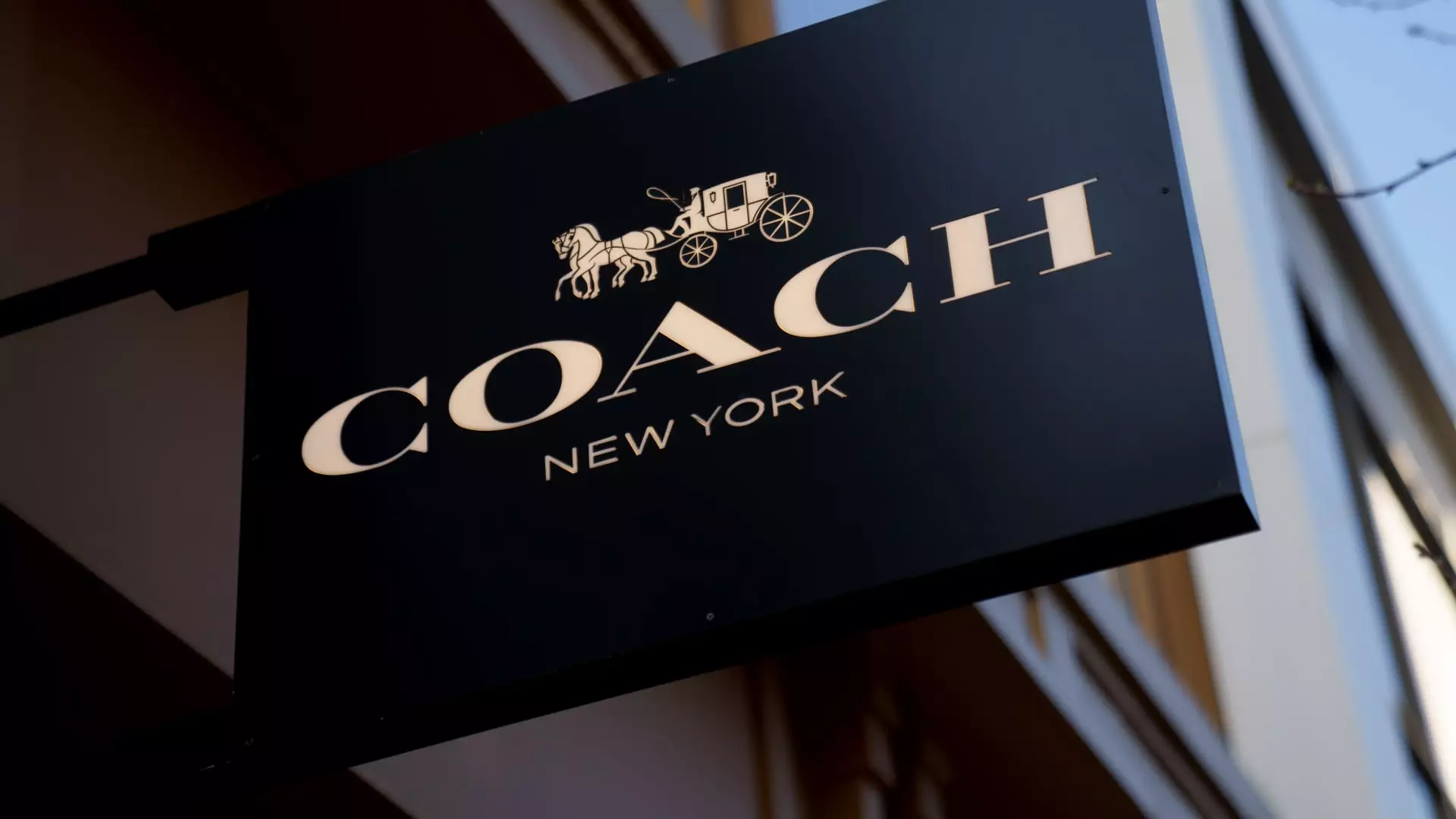Stock Market Insights: Navigating Gains and Losses in Today’s Landscape

In an impressive display of market performance, Tapestry Inc. has captured attention with its remarkable 120% gain within just six months. This meteoric rise was further punctuated by a notable 13% spike in shares, propelling the parent company of well-known brands like Kate Spade and Coach to an all-time high. However, Sylvia Jablonski, co-founder and CEO of Defiance ETFs, suggests that investors contemplate taking profits now, even amidst the company’s recent favorable fiscal second-quarter results. Tapestry’s ability to exceed earnings and revenue estimates, coupled with an upward revision of its full-year outlook, was initially promising. Yet, Jablonski’s scrutiny reveals underlying concerns about the company’s growth tactics.
While the revenue surge is commendable, an analysis of Tapestry’s strategies reveals that the company has heavily relied on price reductions to stimulate growth over recent years. Jablonski points out that the company’s compounded annual growth rate stands at a modest 2.6%, and constant currency growth at merely 1.6%. Such metrics indicate a troubling trend where Tapestry is seemingly forced to cut prices significantly to achieve top-line growth, raising questions about the brand’s sustainability in a competitive market. As Jablonski wisely notes, it is essential for investors to reassess their stake in Tapestry, rather than feeling euphoric about the recent uptick.
Conversely, the gaming platform Roblox has seen its shares plummet 11% following disappointing fourth-quarter results. Jablonski’s analysis categorically dismisses the notion of capitalizing on the current dip, primarily due to underscored weak guidance and waning daily user engagement. This is particularly alarming for a gaming company where user engagement is critical for sustained revenue. The reported 85.3 million daily active users significantly fell short of the expected 88.2 million, creating skepticism about Roblox’s future viability. Moreover, $1.36 billion in bookings, although close to projections, has undermined investor confidence.
In environments where daily user engagement metrics are rapidly becoming foundational for long-term success, the outlook for Roblox appears bleak. Jablonski’s sentiment reflects a broader apprehension in the investor community, illuminating the need for companies like Roblox to innovate and rekindle user interest—an endeavor that may prove challenging against mounting competition.
In stark contrast to Tapestry and Roblox, Oracle stands out as a beacon of optimism in the tech sector. With shares climbing nearly 50% over the past year, Jablonski expresses unabashed enthusiasm for Oracle, particularly its pivotal role in artificial intelligence infrastructure. She describes the company as “the cool kid on the block,” signaling a shift in market dynamics where Oracle is increasingly viewed as an innovator in harnessing AI capabilities to drive efficiency.
Jablonski’s confidence is bolstered by Oracle’s strategic positioning within the cloud computing landscape. Innovations like its DeepSeek technology not only align with the industry’s evolution but are expected to catalyze growth. The company’s infrastructural capabilities are foundational for creating robust AI applications, reinforcing its standing as a formidable player in the market. As the narrative shifts from skepticism to optimism, Oracle appears well-equipped to navigate the increasing demands for AI-integrated solutions, providing a compelling investment opportunity in a fluctuating economy.
The current stock environment presents both challenges and opportunities. While Tapestry and Roblox illustrate the dangers of over-reliance on promotional tactics and engagement metrics, Oracle exemplifies a company poised for sustainable growth. Investors must remain vigilant, discerning the underlying health of companies beyond immediate gains.





